4×5 view camera adapter for a 35mm SLR
I recently acquired an early 1900’s Gundlach 4×5 view camera with a few lenses and designed an adapter to mount a modern DSLR body where the film plane would go. There is no lens connected to the SLR — the 4×5 lens images directly onto the CMOS sensor. The bracket design is thing:18989 and can likely be adapted for other field or monorail cameras. There are some limitations with the design, but it works acceptably well in practice.
The “view finder” in a view camera is not a small prism with an eyepiece — instead a large 4×5 (100×127 mm) piece of ground glass is positioned directly behind the lens where the film will be inserted. Since there is no pentaprism or reflex mirror, the “real image” appears upside down. The resolved image is fairly faint, so a dark cloth is used to block out ambient light while a loupe is used to focus the camera.
Even the Canon 5D’s full frame 35mm sensor is much too small to image the entire region — the above captured image is clearly cropped compared to the full ground glass. The 4×5 image plane is 161 mm diagonal, while the full frame 35mm is only about 43 mm diagonal, making an effective “crop factor” of about 4x. The above image is with an “8 inch” (210 mm) lens, which is about a normal focal length for 4×5, but would be considered telephoto for 35mm. The lens is still 210 mm, regardless of the camera body it is mounted on; the crop factor is a quick way to compare relative field of views.
One major advantage of using a DSLR with a “Live view” mode is that it allows focusing without using a loupe. To focus, the 10x digital zoom is selected and then the forward standard is moved along the geared rack. Moving the objective lens closer to the film plane will focus further away; the infinity focus is typically at a distance equal to the focal length of the lens.
One drawback to this style mount is that the SLR camera’s film plane is several mm behind the original film plane. This would not be a significant issue since the rear standard can be advanced forwards to adjust for this discrepancy, except that this can cause the bellows to be compressed too far and limit the range of movement. One way to fix this is with a recessed lens board; the other is to mount the lens backwards so that the objective element is inside the bellows, providing a cm or more of additional movement. If the lens is mounted inside, it will need to have the aperture select before installation.
Some of the antique lenses are not very sharp, leading to significant halation and chromatic aberration. They also are not very fast (f/4 and slower) and typically have much lower transmission ratios, so dark indoor photography requires several seconds of exposure. And a “wide” large format lens is still a very tight portrait field of view on the smaller sensor, limiting the use for epic landscapes or building photography.
On the plus side, the ability to have full movement of the objective element and film plane makes for some marvelous opportunity to experiment with rise/fall, tilt, shift and swing. The beautiful wood work on some of these field cameras makes them quite the attention getter, as well.
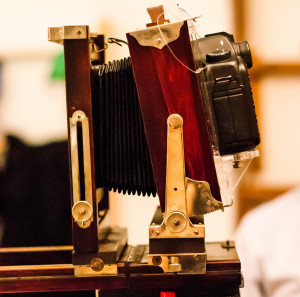
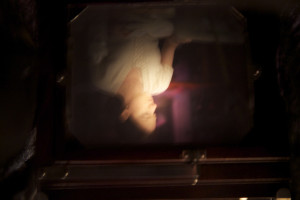
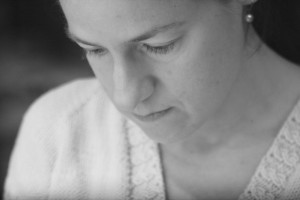
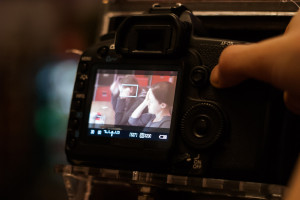
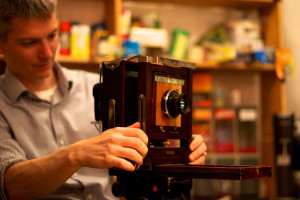
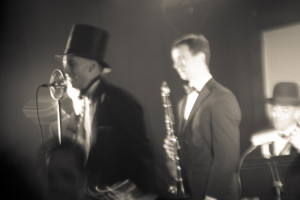
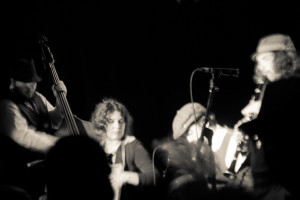
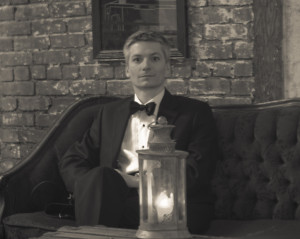
So, now I have another reason to visit NYCR again: talk to Trammell about 4×5 cameras. 🙂